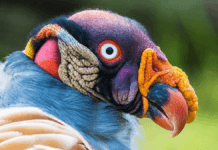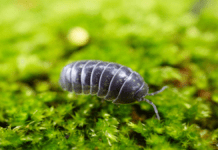Mushrooms are tasty, interesting, special, and sometimes just a bit odd. But, regardless of how you see them, it’s clear they play a big part in our world and are important for nature. Additionally, they bring new flavors to our meals and provide many health benefits. Let’s explore some cool and fun facts about mushrooms to help you learn more about these special living things.

Mushrooms aren’t plants or animals. They’re a type of fungus, part of the fungi kingdom, which also includes yeasts, mildews, molds, rusts, and smuts. Fungi, especially mushrooms, are so intriguing and different that, even though we’re starting with eight facts about them, there’s much more to know!
- Fungi are more similar to humans than plants!

While scientists once thought fungi were plants, we now understand better. Discoveries reveal that fungi share a closer genetic relationship with animals, including humans, than with plants. Here are a few reasons why fungi are more like animals.
– They absorb nutrients from organic matter, unlike plants that make their food through photosynthesis.
– Fungi have a fibrous substance called chitin in their cell walls, similar to animals, unlike plants.
– Similar to humans, fungi require food, water, and oxygen to survive. They use hyphae to take in nutrients, water, and oxygen from their surroundings and release waste products and CO2.
- Fungi are the largest life forms on Earth!

The mycelium, which is the fungal network, can grow and spread for miles underground as it searches for food. The most extensive living organism on the planet is a single honey mushroom (Armillaria ostoyae) in the Malheur National Forest, Oregon, USA. This mushroom covers about 3.5 miles (5.6 km) in width, spanning an area of 965 hectares (2,385 acres), and is at least 2,400 years old, potentially even older. It holds the title of being the world’s largest fungus.
- Fungi help trees to communicate with each other!

“Mycorrhizal” fungi form a mutually beneficial relationship with host trees and plants. They interact with the plant’s roots, providing nutrients and receiving simple sugars in return. Beyond this, the fungi’s mycelial network plays a crucial role in exchanging nutrients and information among plants and trees of different species. In 1997, Professor Suzanne Simard discovered that trees communicate through mycorrhizal networks, coining the term “Wood Wide Web.” These expansive mycelium networks allow trees to share nutrients and alert each other to threats like droughts, pests, and diseases.
- Mushrooms are the fruit of a fungus.
They are the reproductive structures of a larger underground fungus. Comparatively, just as an apple is the fruit of a larger fruit tree, the visible mushrooms are only the surface of the fungus, typically representing about 5% of the entire organism.
- Some mushrooms can remain dormant!

For many years or even decades, they await the right weather conditions for reproduction. The primary component of the fungus is the expansive underground network of mycelium and the central purpose of the mycelium is to reproduce and secure the survival of the fungus species. When the appropriate conditions arise, the fungus generates mushrooms, each requiring specific temperatures and humidity levels for their development and spore distribution.
- Some mushrooms can glow in the dark!

Around eighty species are known that glow in the dark, and new discoveries are ongoing. Recently found in Meghalaya, India, a delicate mushroom growing on decaying bamboo emits such a vivid glow that locals refer to them as “electric mushrooms” and use them as natural torches. Bioluminescent mushrooms utilize light-emitting compounds like luciferins to produce this glow, attracting insects. These insects aid in the dispersal of spores to new locations, contributing to the species’ survival.
- Mushrooms have the ability to create beautiful natural dyes!

The versatile combinations of mushrooms and solvents can produce nearly any imaginable hue. This practice gained attention in 1972 when artist Miriam C. Rice showcased mushrooms’ dyeing potential. Today, mushrooms are widely utilized to dye various materials such as wool, paper, and other fibers.
- There’s a mushroom that devours when picked!

Shaggy ink cap mushrooms, also known as lawyer’s wig, are delectable when harvested in the button stage with white gills, but they require swift cooking. As these mushrooms mature, their gills shift to a pink hue and fill with a black liquid containing spores. This black substance drips to the ground, spreading the spores. Once the mushroom has completed the spore dispersal, it initiates auto-digestion, consuming itself. Picking a shaggy ink cap triggers this self-digestion process, and you typically have 24 hours to utilize them before they transform into an inedible black mess.



















